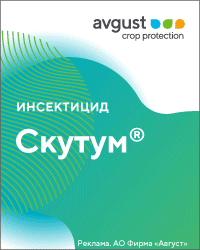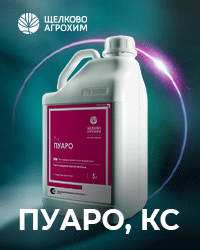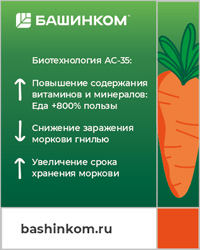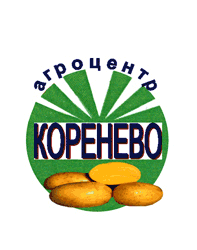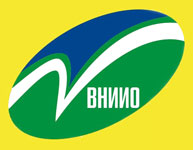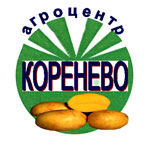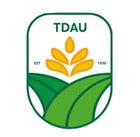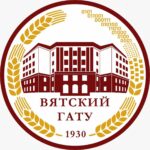UDC 635.649:631.527
https://doi.org/10.25630/PAV.2024.66.32.005
Karakadzhiev A.S., Kigashpaeva O.P., Gulin A.V., Dzhabrailova V.Yu.
A new direction of nutrition, functional, is based on the consumption of so-called functional foods, which include sweet peppers with purple fruits containing anthocyanin, which have antioxidant, anti-inflammatory, antidiabetic and other beneficial properties. The relevance of the work is to expand the range of cultivars with increased antioxidant activity, the use of which will improve the healthy functional nutrition of the population. The aim of the work is to create new lines of sweet pepper with purple fruits, bearing qualitatively new properties. For the first time, lines of sweet pepper with signs of the same purple colour and different shapes and sizes of fruits were bred. Breeding work was carried out in 2018-2023 at the All-Russian research institute of irrigated vegetable and watermelon growing – a branch of Federal state budgetary scientific institution Caspian agrarian federal scientific centre of RAS (VNIIOB) according to accepted methods and technologies. The soil of the site is alluvial meadow, medium loamy, slightly saline, the humus content in the arable layer is 1.84%. The objects of study were cultivars and breeding lines of sweet pepper of the VNIIOOB selection, differing in shape, size, colour of plants and fruits, maturation periods and directions of use. As a result of hybridization of the Zyganskiy Baron cultivar with the Dar Kaspiya, Sprinter and Novichok cultivars (VNIIOOB), which differ in shape and size of fruits, non-splitting lines were obtained, combining morphological features with higher yields and fruit weight. All three new lines in the offspring inherited anthocyanin colouring in fruits and plants of the Zyganskiy Baron cultivar. The obtained lines represent a promising breeding material for the creation of competitive cultivars and hybrids of sweet pepper.
Key words: sweet pepper, flavonoids, anthocyanins, fruits colour, antioxidants; biological activity, functional nutrition
Karakadzhiev A.S., junior research fellow, department of breeding and seed growing. ORCID: 0000-0001-7572-3578. Е-mail: vniiob@mail.ru
Kigashpayeva O.P., Cand. Sci. (Agr.), head of department of breeding and seed growing. ORCID: 0000-0003-4578-6177. E-mail: vniiob@mail.ru
Gulin A.V., Cand. Sci. (Agr.), director. ORCID: 0000-0001-6000-5311. E-mail: vniiob@mail.ru
Dzhabrailova V.Yu., junior research fellow, department of breeding and seed growing. E-mail: vniiob@mail.ru
All-Russian research institute of irrigated vegetable and watermelon growing – a branch of Federal state budgetary scientific institution Caspian agrarian federal scientific center of the Russian Academy of Sciences
- Alpatiev A.V. Peppers and eggplants. Moscow. Moskovsky Rabochy. 1953. 79 p. (In Russ.).
- Sweet pepper is a vitamin product. A.V. Gulin, V.A. Machulkina, O.P. Kigashpaeva, L.P. Lavrova, V.Y. Dzhabrailova. Food industry. 2022. No11. Pp. 25-28. DOI: 10.52653/PP.2022.11.18. (In Russ.).
- The concept of creating a Russian national system of functional food products. Yu.V. Fotev, V.F. Pivovarov, A.M. Artemyeva, I.M. Kulikov, Yu.K. Goncharova, A.I. Syso, N.P. Goncharov. Vavilov Journal of Genetics and Breeding. 2018. No22 (7). Pp. 776–783. DOI: 10.18699/VJ18.421 (In Russ.).
- Shoeva O.Y. Anthocyanins – secrets of colour. Chemistry and life. 2013. No1. Pp. 13–15 (In Russ.).
- Genetic diversity and antioxidant potential of sweet pepper cultivars (Capsicum annuum L.) of Siberian breeding / I.V. Totsky, E.I. Gordeeva, T.V. Kukoeva, A.F. Petrov, R.S. Yudina, E.K. Khlestkina. Journal of Genetics and Breeding named after Vavilov, 2019, No5. Pp. 4-5. DOI: 10.18699/ 2019-5-4 (In Russ.).
- The composition of antioxidants in Capsicum spp fruits to obtain biofortified products. M.I. Mammadov, O.N. Pyshnaya, A.A. Baykov, V.F. Pivovarov, E.A. Jos, A.A. Matyukina, M.S. Gins. Agricultural Biology. 2017. Vol. 52. No5. Pp. 1021–1029 (In Russ.).
- The dependence of the colour of pepper fruits on the ratio of the main pigments and the expression profile of the genes of biosynthesis of carotenoids and anthocyanins. M.A. Filyushin, E.A. Jos, A.V. Schennikova, E.Z. Kochieva. Plant Physiology. 2020. No67(6). Pp. 644-653. DOI 10.31857/S0015330320050048 (In Russ.).
- Anthocyanins as components of functional nutrition. R.S. Yudina, E.I. Gordeeva, O.Yu. Shoeva, E.K. Tikhonova, M.A. Khlestkina. Vavilov Journal of Genetics and Breeding. 2021. Vol.25. No2. Pp. 178–189 DOI 10.18699/VJ21.022 (In Russ.).
- Burenin V.I., Piskunova T.M., Vinogradov Z.S. The use of genetic resources in the breeding of vegetable and melon crops. Vegetables of Russia. 2013. No2 (19). Pp. 13–16 (In Russ.).
- Kigashpaeva O.P., Gulin A.V. Economically advantageous varieties of sweet pepper for harvesting and transportation. Problems of agro-industrial complex development in the region 2021. No4. Pp. 35–39 (In Russ.).
- Agrochemical characteristics of the soils of the Astrakhan region. Guide. Astrakhan. 2020. 68 p. (In Russ.).
- Methodology of the state variety testing of agricultural crops. M. 2015. 61 p. (In Russ.).
- Agapov A.S. et al. Methodological guidelines for the breeding of cultivars and hybrids of pepper and eggplant for open and protected ground. M. 1997. 88 p. (In Russ.).
- Daskalov X.R. Methods of production of hybrid seeds of vegetable crops. M. 1996. 19 p. (In Russ.).
- Bakulina V.A. et al. Guidelines for the approbation of vegetable crops and fodder root crops. M. 1982. 414 p. (In Russ.).
- Shmal V.V. Methods of conducting tests for distinctness, uniformity and stability. M. 2005. 119 p. (In Russ.).
- Dospekhov B. A. Methodology of field experience (with the basics of statistical processing of research results). The fifth edition, revised and expanded. Moscow: Alliance, 2014. 351 p. (In Russ.).
- Belik V.F. Methods of experimental business in vegetable growing and melon growing. M.: Agropromizdat, 1992. 210 p. (In Russ.).
- Breeding, seed production and varietal agrotechnics of vegetable, melon and flower crops: edited by S.S. Litvinov. M. 2016. 344 p. (In Russ.).
- Korinets V.V. et al. Recommendations for the cultivation of crops with drip irrigation in the Astrakhan region. Astrakhan. 2003. 47 p. (In Russ.).
- The efficiency of irrigation water consumption in the irrigation of vegetable crops. A.S. Ovchinnikov, O.V. Bocharnikova, V.S. Bocharnikov, M.P. Meshcheryakov. Revue of Lower Volga Agrarian University Complex: science and higher professional education. 2017. No4 (48). Pp. 46–52.
- Colour scale: a handbook for biologists in scientific and applied research. Academy of Sciences of the USSR. V.L. Komarov Institute. Moscow – Leningrad: Publishing House of the Academy of Sciences of the USSR. 1954. 28 p. (In Russ.).
PDF(Rus)
For citing: Breeding of sweet pepper for functional nutrition. A.S. Karakadzhiev, O.P. Kigashpaeva, A.V. Gulin, V.Yu. Dzhabrailova. 2024. No8. Pp. 34-38. https://doi.org/10.25630/PAV.2024.66.32.005 (In Russ.).

